IO NEWS
The Demand for Microgrids Surges as PG&E Cuts Power to Thousands
California has been though a lot this year. As stated by The Los Angeles Times, "The UCLA Anderson quarterly forecast released Wednesday suggested California payrolls will drop 7.2% this year to 16 million jobs, a loss of some 1.5 million since the COVID-19 pandemic hit. The Golden State’s unemployment rate, which was 3.9% in February, will average 10.8% this year." Adding the recent wildfires and power challenges to the mix, California needs help.
Californian Wildfires
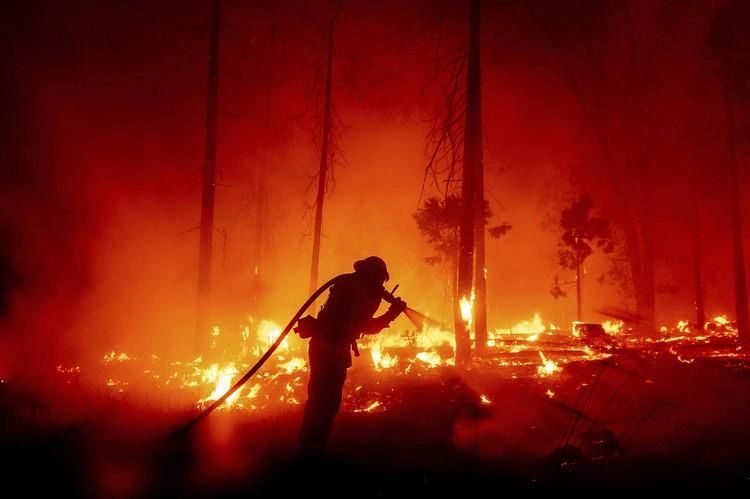
As stated by the Center for Disaster Philanthropy back in October, "There have been 8,486 fire incidents in California in 2020 with 4,105,786 total acres burned. There have been 9,247 structures damaged or destroyed and at least 31 fatalities as of Oct. 13. The 4.1 million acres burned in 2020 are the most in a single year since CalFire began keeping records, and more than the last three years combined."
Fast forward to September, as stated by dw.com, "So far, well over 5 million acres (2 million hectares) have burned across California, Oregon, Washington State and neighboring Idaho. Many of the fires are still not under control and tens of thousands of people have been forced to leave their homes and at least 27 people have died. Many of the survivors have nothing to come back to." The overall economic impact of these fires are projected to exceed the billion, with a B, dollar figure, according to Bloomberg Green.
To make matters worse, California has had a tremendously challenging time keeping the power on. Back in August, customers throughout the State experienced the first rolling blackouts in over 20 years. As stated in The New York Times, at one time, "The state’s electric grid manager, the California Independent System Operator, ordered utilities like Pacific Gas & Electric and Southern California Edison to black out as many as 3.3 million people [in order] to reduce demand for power." As stated by Gov. Gavin Newsom, “These blackouts, which occurred without prior warning or enough time for preparation, are unacceptable and unbefitting of the nation’s largest and most innovative state.”
Public Safety Power Shutoffs
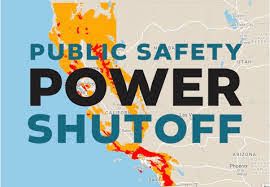
Amidst these rolling blackouts, the major Californian Utilities had warned that customers should expect "No more than 30% reduction in wildfire-related power shutoffs" as well. These Public Safety Power Shutoffs, which had dominated the news in 2019, have continued to be the Utility's "most viable" solution towards reducing liability for fire damage from their own equipment, during hot and dry days. As stated by Microgrid Knowledge, "Commissioners reiterated throughout the separate hearings that shutoffs must be a ‘tool of last resort,’ but the utilities also made clear that de-energization is critical to their operations and strategies. Southern California Edison (SCE) noted in their slides that they expect 'to reduce the scope, duration, and impact of PSPS; however, PSPS will continue to remain a viable solution for extreme conditions.' Utilities shut off power to more than three million Californians at some point as a result of 19 PSPS events in October and November last year, often with little warning."
Right On queue in the midst of October, as if 2020 is determined to not be outshined by the hardships of 2019, As reported by the Mercury News, "Pacific Gas & Electric Co. [was] poised to shut off power to 54,000-plus customers, including thousands in the Bay Area, to reduce the risk of sparking new wildfires amid hot, dry and windy conditions Wednesday, the utility said. The public safety power shutoff, or PSPS, [affected] customers in targeted portions of 24 counties."
Lack of Federal Aid
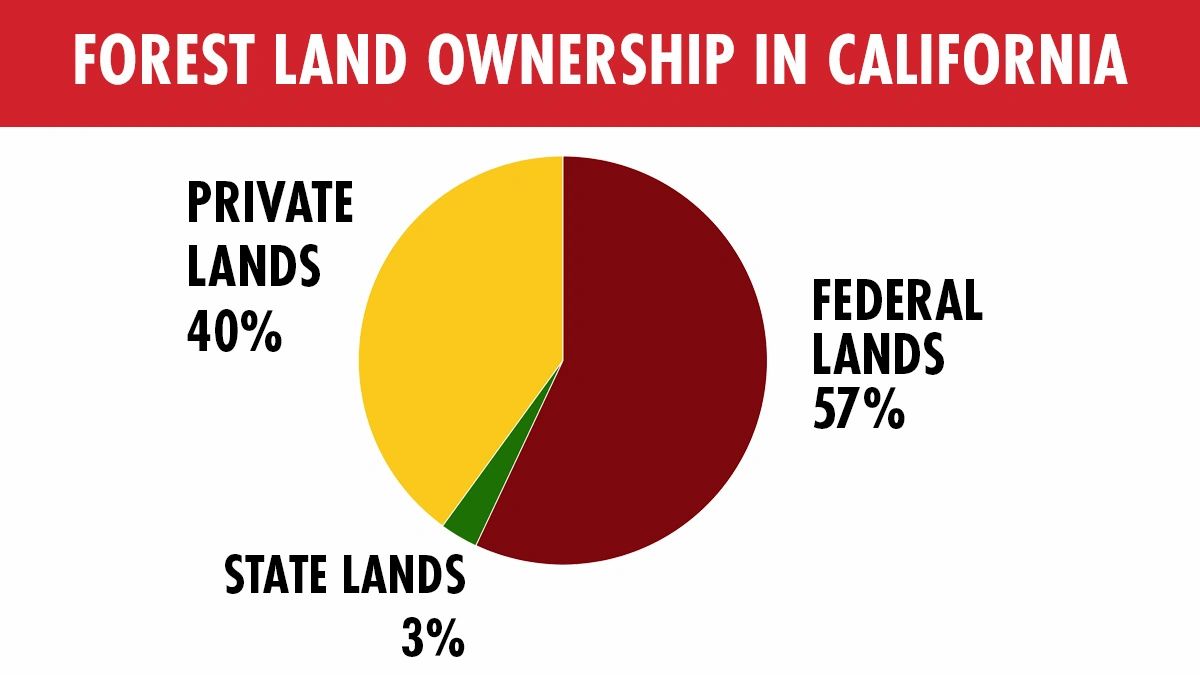
The State of California owns only about 3% of the forest land of California, in comparison to the Federal ownership of 58%, as mentioned by several sources, including BBC News. Understanding this, one might clearly fault the Federal Government itself for poor forest management, not the State of California. With that in mind, for those hoping assistance would come from the Federal Government to assist California in this time of need, as reported by the San Francisco Chronicle on October 16th 2020, this hope would be left unfulfilled. "In a blow that could hamper California’s access to funding for wildfire relief, the Trump administration has denied the state’s request for a disaster declaration related to six wildfires that broke out in September. Gov. Gavin Newsom, in a Sept. 28 letter to the Trump administration, requested major assistance to help the state rebuild communities hit by six fires, including the Creek Fire that continues burning and has destroyed more than 850 structures in Fresno and Madera counties. 'Californians are exhausted,' Newsom wrote. 'Many of the counties impacted by these wildfires are still recovering from previous devastating wildfires, storms, and the effects of the COVID-19 pandemic.'"
The Demand for Microgrids Grows
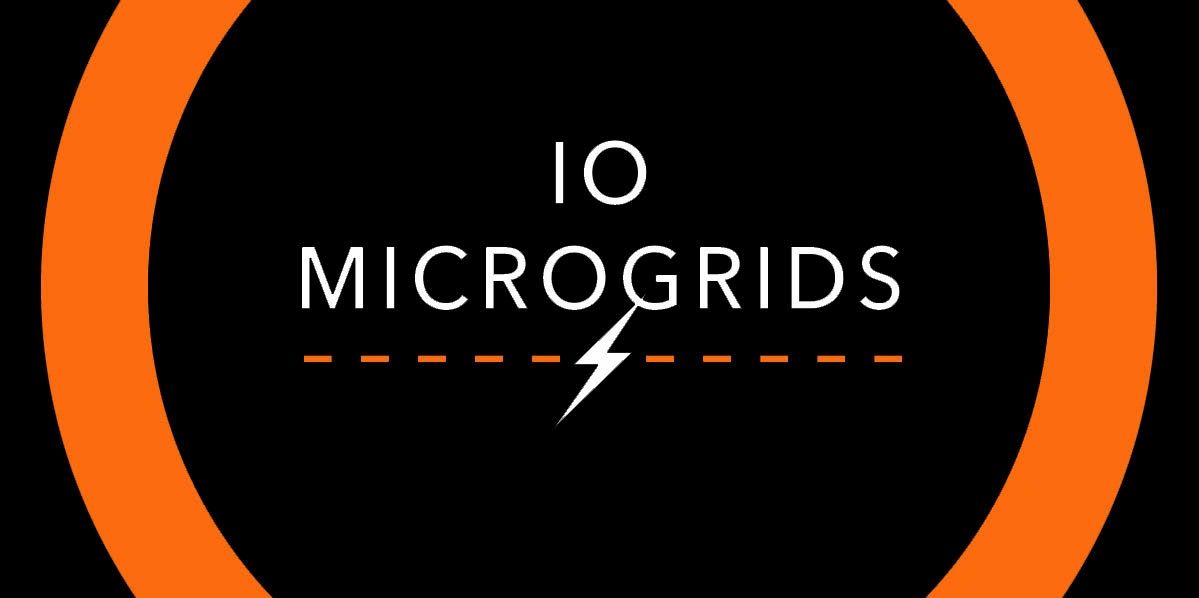
As a result, the burden of resiliency and self sufficiency has once more fallen onto the plate of the average homeowner. As such, the demand for Microgrids has risen once more. As discussed in Microgrid Knowledge on October 12th, " Interest in home microgrids is surging in California in response to wildfires and public safety power shutoffs (PSPS), with microgrid companies saying demand has jumped by as much as 1,000% in the last month. Not only has demand increased; so has the pressure to install home microgrids as quickly as possible, and some companies say they can’t move quickly enough to satisfy customers’ requests. 'Every time there is a natural disaster, people start thinking about how we can have a different approach. They then think of microgrids, local generation and local distribution. There’s a lot of pressure to have resilience built into communities.'"
Quoted within that same Microgrid Knowledge article, AJ Perkins of Instant ON states, "'We have people calling from all across the country for home nanogrids and microgrids for businesses, but 90% of these calls are definitely focused on the West Coast.” He has also seen an uptick in customers asking about microgrids with solar and fuel cells, which provide redundancy when smoke undermines the production of solar in California."
Connected Community Funding Through the DOE
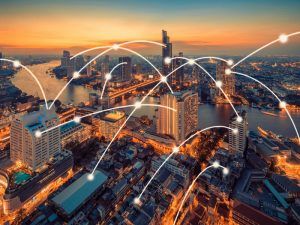
Fortunately, though the current administration has refused to aid California, a recent Department of Energy grant might provide the stimulus needed to spur community connected microgrids throughout California, and the US as a whole. As reported in Microgrid Knowledge on October 15th, "The US Department of Energy (DOE) is now accepting applications for $65 million in Connected Communities funding, which support projects that show how groups of buildings combined with distributed energy resources, including microgrids, can act as grid resources. The DOE plans to select a portfolio of grid‐interactive efficient building (GEB) projects in various climates, geographies and building types as well as of different building ages, distributed resources and utility/grid/regulatory structures, according to a description of the Connected Communities funding opportunity. 'By demonstrating the ability of groups of buildings and distributed energy resources (DER) to modify load, the [funding] outcomes will enable increased energy efficiency, reduced energy demand, and reduced environmental impacts,' the DOE said. The DOE expects the projects to help spur market innovation that will increase demand flexibility and energy efficiency.
Instant ON's Vision

Ultimately what is clear is that California needs more companies and partners to champion the well being of our citizens and communities. There has not been a greater time of need. Instant ON insists on the notion of "decisive collaboration," where resource sharing and cooperation is to take highest priority so that solutions can be created now, not later. Through participating in the development of connected communities, through promoting fuel cell technologies, and through participating in Schneider's Calfironia Energy Action Program and collaborating with companies such as GreenStruxure to provide Energy as a Service (EaaS) solutions for medium sized C&I customers, Instant ON's aims to prove that actions speak louder than words. It is our right to keep our power ON.
For more information about IO's approach, contact Instant ON here.
Follow us on Youtube for our weekly Friday podcasts here.
To receive our weekly news updates, enter your email here.
Follow us on Linkedin here.
Follow us on Facebook here.
Published by David Perzynski on 10/16/2020
